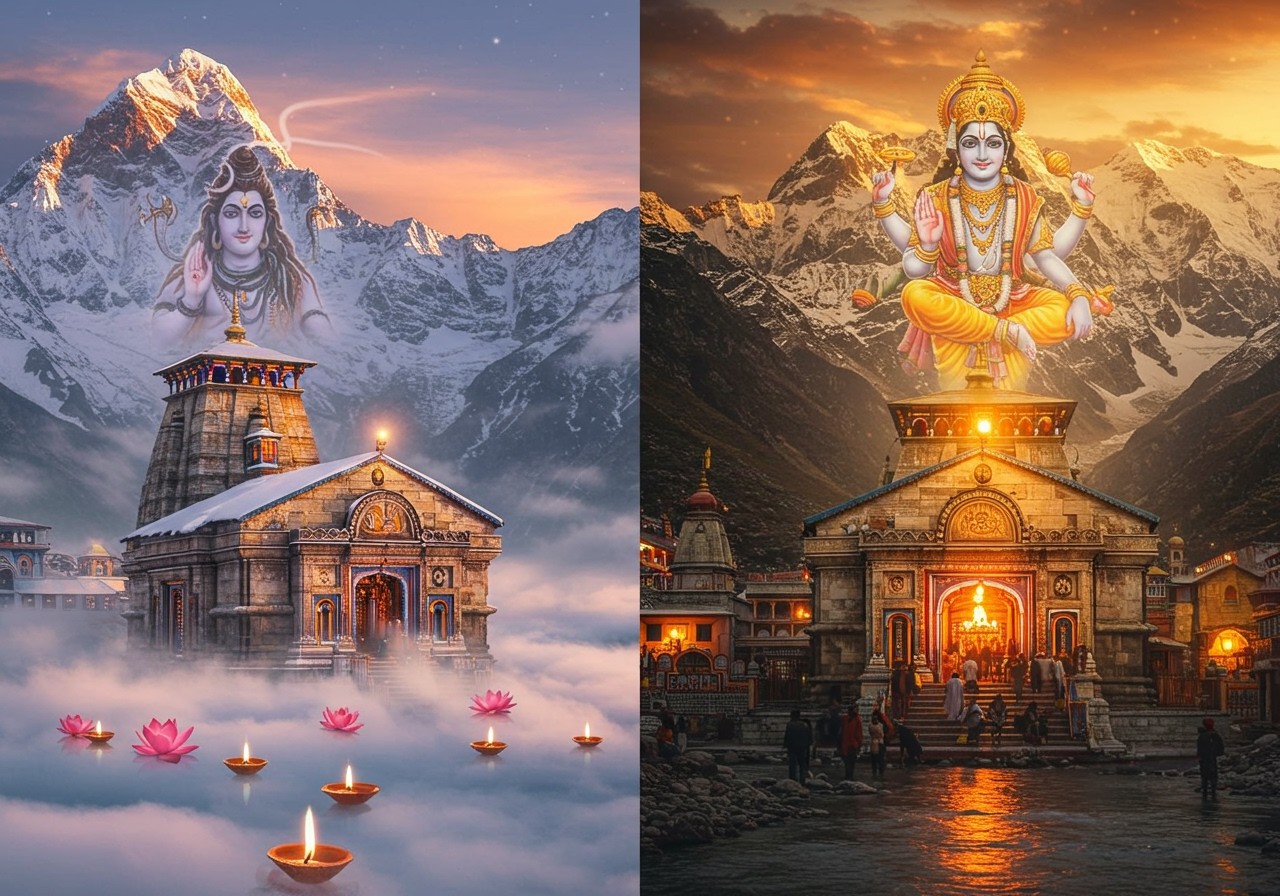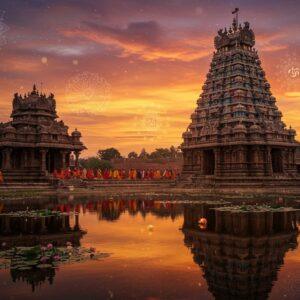
Embark on a spiritual odyssey to the revered shrines of Kedarnath and Badrinath, nestled amidst the breathtaking Himalayas. These sacred destinations hold immense significance in Hindu mythology, forming an integral part of the Char Dham Yatra. This comprehensive guide delves into the historical and spiritual importance of these sites, providing practical insights and essential tips for pilgrims seeking a profound and transformative experience.
Historical and Mythological Significance
Kedarnath and Badrinath are steeped in ancient lore and spiritual significance.
Kedarnath: Abode of Lord Shiva
- Legend of the Pandavas and Lord Shiva: After the Kurukshetra war, the Pandavas sought Lord Shiva’s blessings to atone for their sins. Lord Shiva, elusive at first, finally relented and revealed himself at Kedarnath, blessing the remorseful brothers.
- Architectural Marvel: Constructed with massive stone slabs, the Kedarnath temple stands as a testament to ancient architectural ingenuity, enduring the harsh Himalayan climate for centuries.
- Ancient Scriptures: Kedarnath’s significance is enshrined in numerous ancient scriptures, including the Skanda Purana and the Mahabharata, solidifying its place as a sacred pilgrimage site.
Badrinath: Sanctuary of Lord Vishnu
- Lord Vishnu’s Meditation: Legend has it that Lord Vishnu chose Badrinath as his meditation ground, imbuing the place with divine energy and making it a sanctuary for spiritual seekers.
- Vibrant Facade and Intricate Carvings: The temple’s colorful exterior and intricate carvings showcase remarkable artistry, captivating pilgrims with its visual splendor and spiritual aura.
- Ancient Texts: The Vishnu Purana and other ancient texts extol the virtues of Badrinath, emphasizing its significance as a sacred site for attaining moksha (liberation).
Planning Your Pilgrimage
Careful planning is essential for a smooth and fulfilling pilgrimage to Kedarnath and Badrinath.
Best Time to Visit
The ideal time to visit is during the summer months (May to June) and the early autumn months (September to October) when the weather is favorable for travel and the temples are open.
Travel Routes
- Road Travel: Well-connected roads lead to Kedarnath and Badrinath from major cities like Delhi, Haridwar, and Rishikesh. Regular bus services and taxis are available.
- Helicopter Services: Helicopter services offer a quicker and more convenient mode of transport, especially for those with time constraints or physical limitations.
Acclimatization
Due to the high altitude of these locations, acclimatization is crucial. Spend a day or two in Rishikesh or Haridwar to adjust to the altitude before proceeding further.
Accommodation
A range of accommodation options are available in both Kedarnath and Badrinath, catering to different budgets, from basic guesthouses to comfortable hotels.
Kedarnath Temple
Location
Kedarnath is situated at an altitude of 3,583 meters near the Mandakini River.
Architecture
The temple’s sturdy architecture, built with large, heavy stone slabs, is a marvel of ancient engineering.
Rituals and Daily Worship
Witness the morning and evening aarti ceremonies for a deeply spiritual experience.
Reaching the Temple
The temple can be reached by a 16 km trek from Gaurikund. Helicopter services are also available.
Badrinath Temple
Location
Badrinath is situated at an altitude of 3,133 meters on the banks of the Alaknanda River.
Temple Facade
The temple’s colorful facade and intricate carvings are a visual treat.
Rituals and Daily Worship
Take a dip in the Tapt Kund hot springs before entering the temple for a purifying experience.
Kedarnath to Badrinath: Distance and Travel
The distance between Kedarnath and Badrinath is approximately 218 km by road. Travel options include taxis, buses, and helicopter services.
Tour Packages and Arrangements
Various tour packages are available, offering comprehensive services including transportation, accommodation, and guided tours. Choose a reputable operator based on reviews and testimonials.
Poojn.in: Your Spiritual Companion
Prepare for your sacred journey with Poojn.in, India’s leading provider of puja samagri and holy offerings. We offer a wide selection of authentic products, ensuring you have everything you need for a meaningful pilgrimage experience. Visit www.poojn.in to explore our collection and order online. Our pan-India delivery service ensures your items reach you conveniently, no matter where you are. Bel Mala and Tulsi Mala are highly recommended for your spiritual journey.
Conclusion
A pilgrimage to Kedarnath and Badrinath is a transformative experience, offering spiritual solace and a deeper connection with the divine. Plan your journey meticulously, embrace the spiritual aura, and create lasting memories.
FAQs
How far is Kedarnath from Badrinath? Kedarnath and Badrinath are approximately 218 kilometers apart by road.
What’s the ideal time for this pilgrimage? The best time to visit is from May to June and September to October for pleasant weather.
Can I visit both places in one trip? Absolutely! Numerous tour packages facilitate combined visits to both shrines.
Why are these sites significant? Kedarnath, a Jyotirlinga, honors Lord Shiva, while Badrinath, a Char Dham site, is dedicated to Lord Vishnu.
How do I travel between the two? Road travel via taxis or buses, along with helicopter services, are available.
What should I pack? Pack warm clothes, comfortable shoes, rain gear, a first-aid kit, and necessary medications.
Are accommodations available? Yes, various lodging options, from budget-friendly to luxurious, are available in both locations. Booking in advance is recommended.
Do I need a guide? While not mandatory, a guide can enrich your experience with historical and religious insights.


